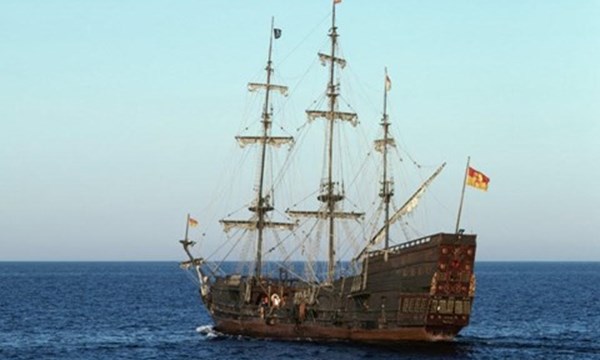San José, a Spanish warship sunk in the 18th century, once contained a great treasure, so great that one could not imagine a ship floating at sea. Recently the ship has been found, after centuries on the seabed of the Caribbean.
Explore the fascinating history of the wreck containing the world’s greatest treasure
“As head of the country, I am happy to inform you that we have found the battleship San José, 307 years after it sank,” President Juan Manuel Santos said in a statement released last week.
Fierce war at sea
The San José is said to be one of the world’s greatest treasures, worth billions of dollars. The Colombian side discovered San José on November 27, when an international research team, led by the Colombian Academy of Anthropology and History (ICANH), discovered an ancient ship with similar structural features. This is a laudable achievement after a decades-long effort by Colombia.
“Today we commemorate the 600 sailors who lost their lives when San José sank,” Santos said. The 600 people he spoke of were sailors from San José, most of whom died when the ship sank to the bottom of the sea.
History books say the San José fell victim to the Spanish Throne War – which aimed to determine who would rule Spain after the death of King Charles II, who had no children. The context leading up to the war is when the King of France Louis XIV announced that his nephew Philippe would become King of Spain in 1700, shortly after the death of Charles II. But the British viewed the combination of France and Spain as a giant threat. As a result, war broke out a year later.
At that time, Spain had a fleet of specialized warships in the Americas, filled with gold and silver, then returning to Europe. The British sought to plunder these vulnerable ships, seeing them as an effective means of cutting off Spain’s money supply.
In 1708, the Spanish fleet of Conde de Casa Alegre, under the command of General Don Joseph de Santillan, left for Spain. This fleet consists of 17 ships, three of which are large warships. The flagship was the San José, carrying 64 bronze cannons and over 600 sailors. In the compartment was 7 million gold pesos (according to official registration data and observers say that the number of gold and silver that the ship easily carried exceeds at least double that figure).
The second largest ship in the fleet was the San Jaochin, with 64 bronze cannons and 400 to 500 sailors. The third is the Santa Cruz ship, with 44 bronze cannons and 300 crew members. The fourth was the Nietto, with 40 bronze guns and 140 crew. These were the main ships carrying large guns, while the rest of the fleet were mostly merchant ships or small warships with few large guns.
Although she had been informed in advance that the enemy ship was blocking the route, the fleet headed confidently towards Spain. On June 7, this fleet arrived on the island of Baru, Colombia, and anchored there due to unfavorable winds. This is when the British act.

With only four warships in hand, British Admiral Charles Wager always deftly leaned into the wind to attack the Spanish treasure fleet. And although the Spanish fleet quickly set up the reception, the British ships still opened fire, causing great damage to the enemy.
It is a fact that the British fleet is armed with very strong firepower. The flagship under Admiral Wager’s command was H.M.S Expedition, with up to 72 guns. The second ship, Kingston, has 64 guns and Portland 58.
The betting strategy is to attack San José, in order to capture the treasure it carries. However, just as the British were about to take control of the treasure, the ship suddenly blew up and sank. He lay quietly in deep water, until last month.


